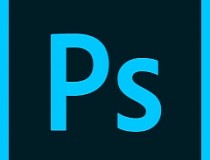

- ADOBE UPDATER CS6 HOW TO
- ADOBE UPDATER CS6 MAC OS X
- ADOBE UPDATER CS6 INSTALL
- ADOBE UPDATER CS6 UPDATE
- ADOBE UPDATER CS6 SOFTWARE
The updater would get to the end of the process and error out. Adobe Digital Publishing Suite Tools 2015.5.

ADOBE UPDATER CS6 SOFTWARE
However, several pieces of support software failed to update: The apps themselves (InDesign, Photoshop, Illustrator) updated successfully. Once Mojave was up and running, installing Creative Suite from the DVD worked as expected.Īfter installation, I ran Adobe Application Manager to check for updates. The installer got stuck at the macOS Utilities screen, regardless of whether I dragged the Mohave installer app to Fusion or built an ISO.Įventually I installed Mojave on an external hard drive and used Fusion’s “Install macOS from the Recovery partition” feature to create a working VM.
ADOBE UPDATER CS6 INSTALL
After repeatedly running into an error using a VirtualBox setup script, I downloaded VMware Fusion 12 Player and tried to install it. Not wanting to spend $60/month for occasional use, running these under Mojave in a VM was my next-best option. after it you have to delete this folders with Adobe Manager in the name.After upgrading from Mojave to Catalina and Big Sur, Adobe Creative Suite 6 Design Standard no longer worked (despite Illustrator and Photoshop being 64-bit apps). If you are with Dreamweaver opened, or another Adobe application, it will be in the list too but you have to consider only the ones that have “Adobe Manager” in the line.ģ. Probably the file are in the folder called “Utilities” or something similar. Find the location of processes that have ” Adobe Manager ” in the line. After this command you will see all Adobe processes that are running in your Mac.Ģ. The command in terminal is ” ps aux | grep Adobe”. When the Adobe Manager application is running, you can find its path location listing the processes of OS X. After you do the steps bellow, you will receive a message that Adobe Manager are not installed in your computer when you start any adobe software, but it will start normally. Remove Adobe Manager application from your Mac. There are an additional thing that it is good to do relating Adobe Manager.
ADOBE UPDATER CS6 UPDATE
Guess what Adobe, when I want to update my independently installed 3rd party software I will do it myself! Don’t launch some program right after boot and have it take over my Mac! OK enough frustration, did this work for you? One of my biggest peeves of this app gluttony is the independently launched Adobe Update Manager, it rears its annoying head often on System boot and there is no obvious way to disable it through the preferences.
ADOBE UPDATER CS6 MAC OS X
Remember when you would just have one folder that contained Photoshop? What happened to that? Now you have forty app folders spread out in fifteen directories buried here there and everywhere, Adobe is treating Mac OS X like it’s a Windows filesystem maze. You can usually get rid of Adobe Reader with little consequence, but if your job relies on other Adobe Creative Suite apps then it would not be a solution.įor what it’s worth, I love Photoshop and Illustrator and use both frequently, but I’m really not a fan of some of the stuff that Adobe is piling into the installs nowadays. You could also just remove and uninstall the Adobe software that is causing the update manager to appear, but that is not always an option for some users and some apps. No more annoying Adobe Update window popups, this type of window will be gone for good:

Now you should be able to reboot your Mac, logout of a user, and anything as usual, without the annoyance of Adobe Update Manager barging in on your computing session. There is also the option of manually creating the plist file, either though a plist editor or if you’re familiar with plists just by using a text editor.Īgain you need to create a file located at /Library/Preferences with the name .plist with a boolean set true to “Disable.Update”, as you can see in the screenshot below:

Now, theoretically at least, Adobe Update Manager will not launch on Mac user login and system boot. You can double-check that the file has been created by looking in ~/Library/Preferences/ for the file.
ADOBE UPDATER CS6 HOW TO
Here’s how to do it through the command line: You need to create a file called .plist in your ~/Library/Preferences/ which can be done in two different ways, through the Terminal with a defaults write command, or by manually creating the file with a text editor.


 0 kommentar(er)
0 kommentar(er)
